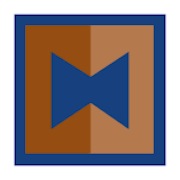Today’s extreme wildfire risk on local communities isn’t limited to the western United States. Midwestern states like Minnesota are no exception to this threat and Dovetail Partners, Inc. (Dovetail) is an organization leading the way in proactive wildfire risk reduction and education before the fire occurs. This small non-profit organization in Minnesota brings the tools, facilitation, processes, creativity, experience, expertise and knowledge of natural resources to accelerate the ability to adapt and adopt successful practices and behaviors. Their highly skilled team fosters sustainability by collaborating to develop unique concepts, systems, models and programs.
One of the many focuses of Dovetail is educating residents on the wildfire risk within a large area of the state. Gloria Erickson, Dovetail Associate and the contracted St. Louis County Firewise Coordinator, was the proponent for the AIM grant. She is a powerhouse leader raising wildfire awareness and motivating action for the last five years working with many partners within Ely, Minnesota and surrounding townships.
The majority of northeastern Minnesota is rural, boreal forest and over 80% of St. Louis County, which stretches roughly from Duluth north to the Canadian border, is forested. The County contains 1.5 million acres (37%) of private lands which is surrounded by the Superior National Forest, and bordered by the Boundary Waters Canoe Wilderness Area and Voyageur National Park, which attract thousands of visitors annually, on the far north end. The county also boasts four state parks and over 1,000 lakes.
Due to cooler temperatures in Minnesota and the abundance of nearby water, people may not view the area as having much of a wildfire risk. However, like many areas in the western U.S., northern Minnesota has multiple forest health issues due to decades of fire suppression, including an increasing spruce budworm infestation. Compounding the wildfire risk, is an increase of high wind events. In 1999, nearly a half a million forested acres were affected. Most recently, the blowdowns of 2016, 2017 and 2018, which occurred in and near populated areas, are currently a major wildfire threat. These conditions have made much of the area extremely susceptible to catastrophic wildfire events. Four significant wildfires have occurred since the 1999 blow down event. The Cavity Lake Fire of 2006, Ham Lake Fire of 2007, and Pagami Creek Fire of 2011 burned over 198,000 acres collectively. The Highway 1 Fire of 2012, small in acres burned, but, occurred within 1 mile of the city limits of Ely. Half the town of Ely was evacuated. All these fires have had significant impact on the local residents.
Both public land managers and landowners are working to address the wildfire risk resulting from these issues. Dovetail plays a vital role in educating and assisting landowners in this process. Gloria engages private landowners through multiple outreach efforts. The most effective tool Dovetail uses to motivate landowners to work on their property, is a curbside, hazardous debris pickup program.
“A lot of the residents I work with are over 65 and they don’t always have the equipment or the physical ability to be able to drag their debris to the local compost pile, which is a 30 to 45 minute drive away for many residents. So this curbside pickup really motivates people to continue to work on their lands as long as they have a way to get rid of the slash,” Gloria explained.
“Gloria Erickson has been a partner we have had the opportunity to work with over 5 years across Saint Louis and Lake Counties, through her capacity in Dovetail. She is full of optimism, endless ideas and energy for projects, trainings, connections, and improvements we can achieve in working in a collaborative way, with many different partners. Much of the work she does is invisible to the larger public, but it brings a greater level of safety to our local communities in a real and meaningful way. Gloria’s ‘clients,’ or road associations who she’s worked with on fuels treatments consider her the cheerleader of fire prevention on private lands. Gloria was nominated for a FEMA Individual and Community Preparedness Award by the Kawishiwi District Ranger on the Superior National Forest and she received the award in 2016.”
Tom Roach, the Assistant Zone Fire Management Officer Superior National Forest
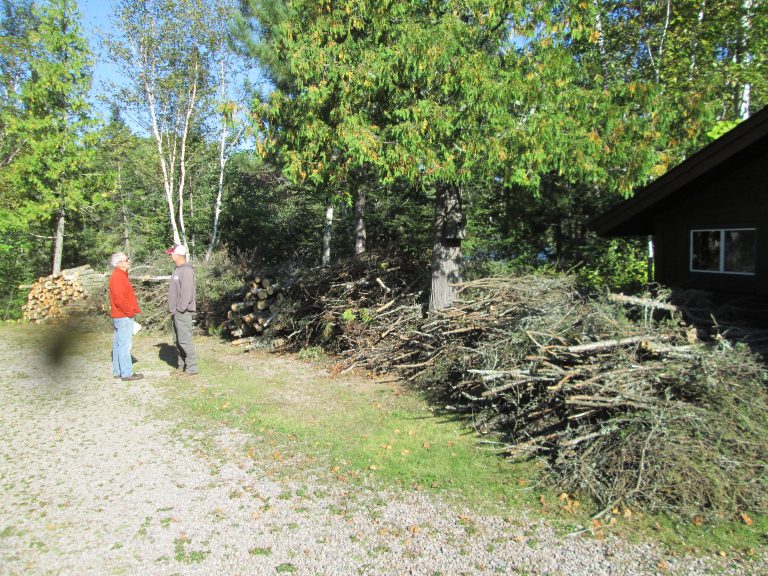

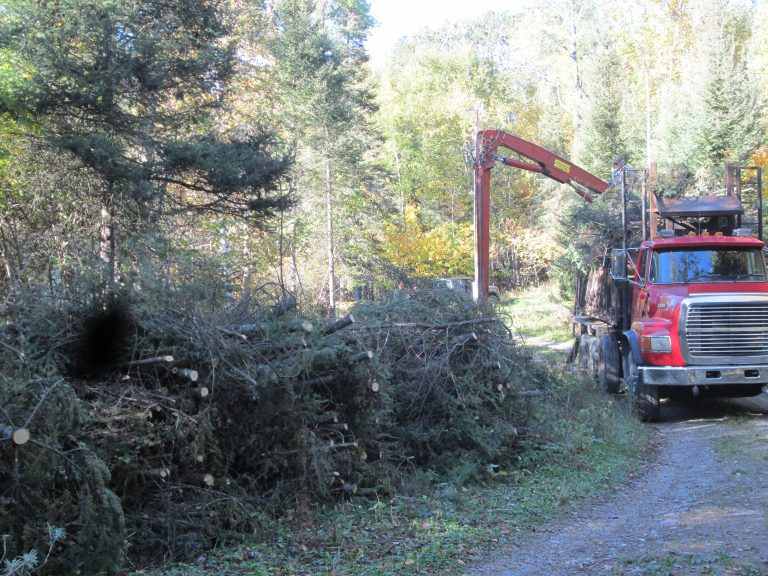
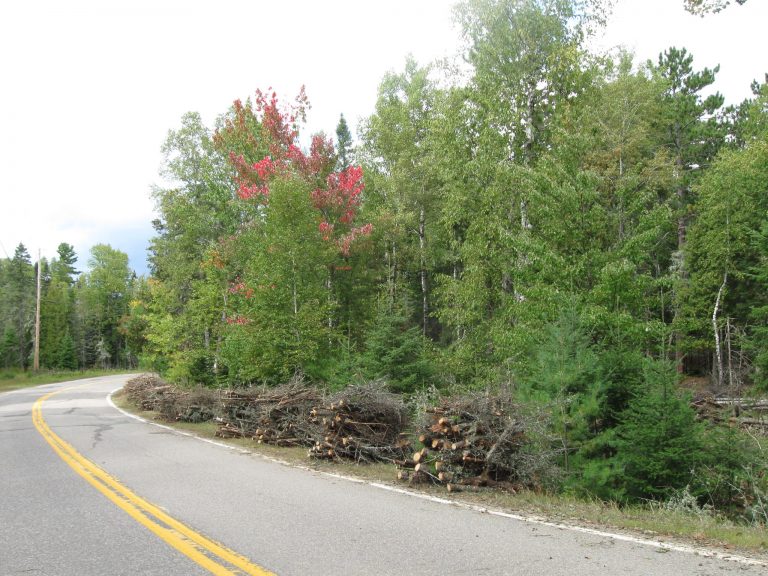
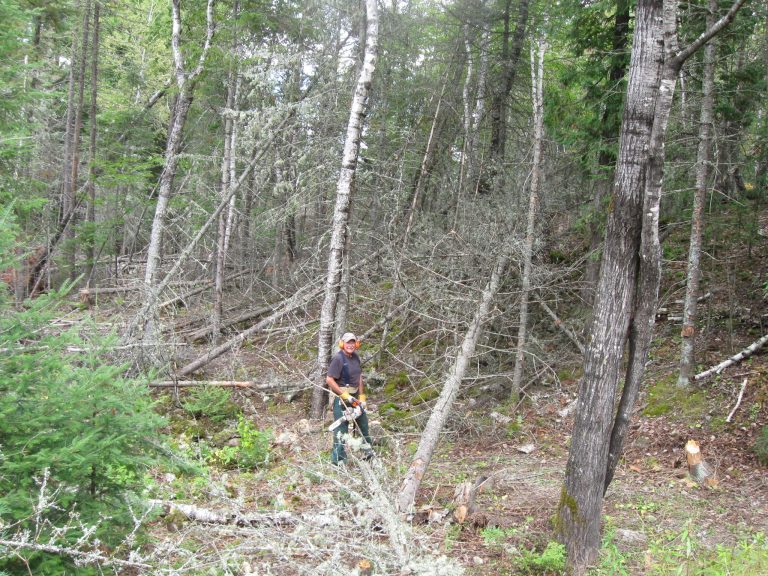
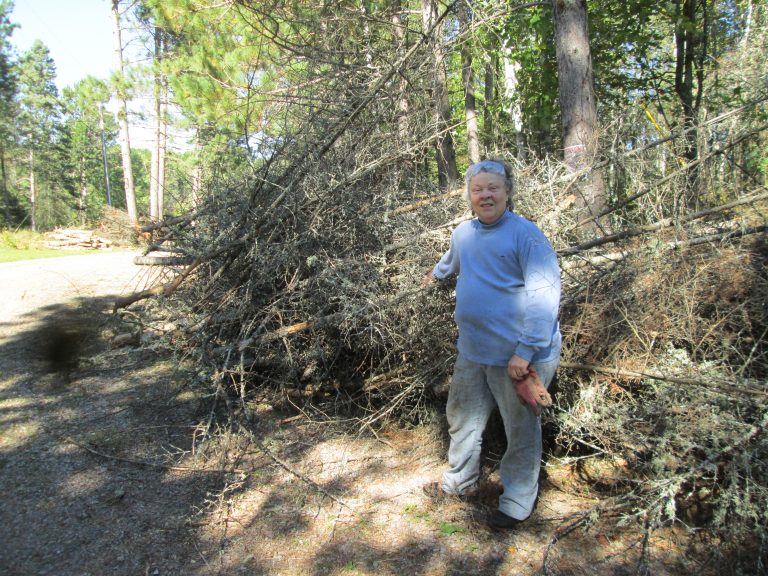
AIM funding was announced at a time when Minnesota Department of Natural Resources Firewise 50/50 match funding was in question.
“I had really created a great momentum in an area where landowners were working hard on their properties, but they just needed this little bit of funding to help remove hazardous debris and I didn’t want it to fall flat,” said Erickson.
Two communities within St. Louis County, Eagles Nest and Duluth Township, are working hard keeping the wildfire mitigation momentum going. Both towns have a history of growing participation by community landowners in reducing fuels on their property. In addition, they are working to create permanent and more locally funded disposal opportunities for their residents.
To date, Eagles Nest residents have contributed over 2,000 volunteer hours over the last five years, and Dovetail has assisted in hauling away tons of debris. Eagle’s Nest is a small community of approximately 500 residents. They have created an emergency preparedness group and have a Firefly group raising funds through bake sales and garage sales to support their local volunteer fire department. This forward thinking community believes in raising money locally to fund wildfire resilient efforts and is an outstanding community example of motivated action in an area with a long fire return interval.
The fire department in Duluth Township, a community of 1,700 people located in southern St. Louis County, has focused their efforts over the past couple years on replacing their 911 signage, hosting a spring hazardous woody debris drop off and chipping event and presently hopes to set up a tool rental program.
With help from Dovetail, efforts are underway to update the St. Louis County Community Wildfire Protection Plan, and both Eagles Nest and Duluth Township have played an active role. Both communities are taking a deeper dive into identifying their communities’ specific wildfire resiliency needs and prioritizing action items to address these needs.
Dovetail is grateful for AIM funding as it pays for staff time to coordinate slash programs, facilitate valuable community discussions, support CWPP strategic planning efforts, and track mitigation progress on the ground; activities which are often difficult to fund.
